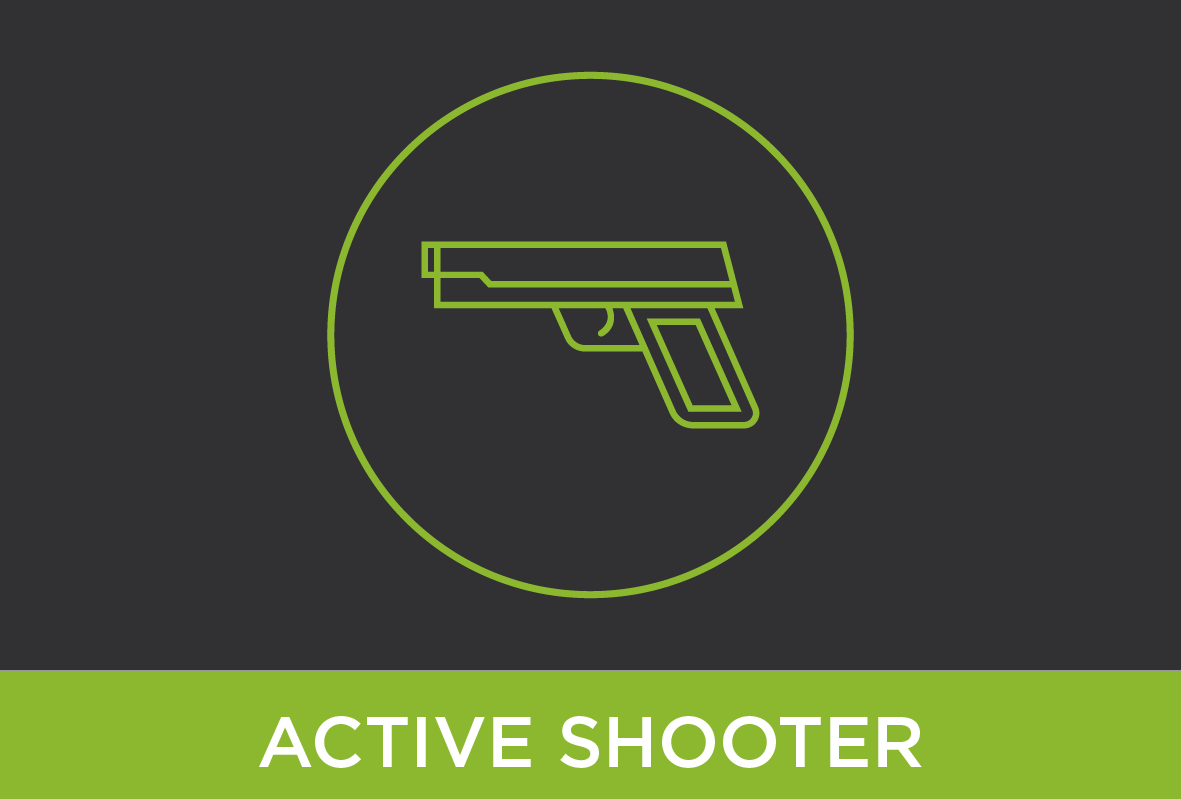Active shooter incidents are not just happening at colleges and schools; they are happening in all types of places of work, play, and worship. The number of people killed in mass shooter attacks has escalated since 2012. Two of the deadliest mass shootings happened in 2017. Over the last decade, there have been 475 people killed and 882 people wounded in America due to mass shootings. These activeshooter statistics are unbelievable – yet a reality. Legally, all employers must now address the possibility of an aggressive intruder or active shooter who means to do harm to people in work settings.
Although we don’t usually know when these incidents are coming or how to prevent them completely, all organizations must continually work to better ensure the safety of their employees, students, and visitors through proper preparation, response, and recovery. This is achieved by understanding the stages of a critical incident and enabling multiple modes of communication to ensure everyone is alerted immediately and provided with the proper guidance; no matter where they are.
The Active Shooter Emergency Preparedness Guide is a blueprint that maps each phase of incident communications to the associated actions required for an organization to be successful. This guide breaks down what actions are needed to be taken Before, During, and After an active shooter incident.
Key Factors to Know Before
The Before stage of planning for an active shooter crisis is critical. It provides you the opportunity to prepare and plan your communications and actions that need to be taken once an incident is active. Therefore, you don’t have to come up with “the plan” while the incident is transpiring.
It is recommended that your organization run through an Active Shooter Preparedness Assessment to ensure your organization understands and is ready to handle this type of situation. When weapons are involved, there are higher stakes; which if planned for in advance may save lives. During any emergency that threatens human life, adrenaline and emotions run high and sometimes you won’t craft alerts properly, call the police immediately, or advise your people what directions to follow to keep them safe. A thorough assessment is a great way to ensure you’re keeping people safe through alerts and giving them the proper procedures to take.
Next, it’s crucial to assemble a Critical Communication Team (CCT), also named Crisis Management Team, who will take the lead in developing and delivering those important communications when an emergency event occurs. Having the right people participate in the plans and actions is very important. It is advised to have a member of each department on this team.
Following, your organization should try to determine all possible active shooter scenarios you might encounter aligned with the correct communications to specific groups of people. Obviously, it is critical when it comes to relaying the correct message and the correct actions to be followed. This saves you an extra step in wondering where you should send your people if there’s an active shooter on the East entrance versus on the 8th floor.
Furthermore, it is critical to determine what modes of communication will be used to alert your people. The alert you craft to send out in moment’s notice is only half the battle. You cannot reach everyone with a single mode. For instance, a text message may not be received by someone who is at practice on an outdoor field or by someone who’s working in a basement with limited connectivity. You need to use multiple methods of communication to ensure you reach everyone; no matter where they are.
Additionally, frequent tests, exercises, and drills help to ensure that your CCT is well-prepared to cope with a real emergency. It isn’t enough to just have a well-crafted active shooter plan. You must also work with your CCT, and your entire organization, to practice so they have a better understanding of what to do if they receive that alert saying there’s an active shooter on campus.
Preparing your organization, your CCT, and your people before an active shooter incident happens ensures a better chance of keeping your people safe and protected. To learn more about what steps should be taken Before, During, and After an active shooter incident, download the Active Shooter Emergency Preparedness Guide to help your organization be more prepared.



